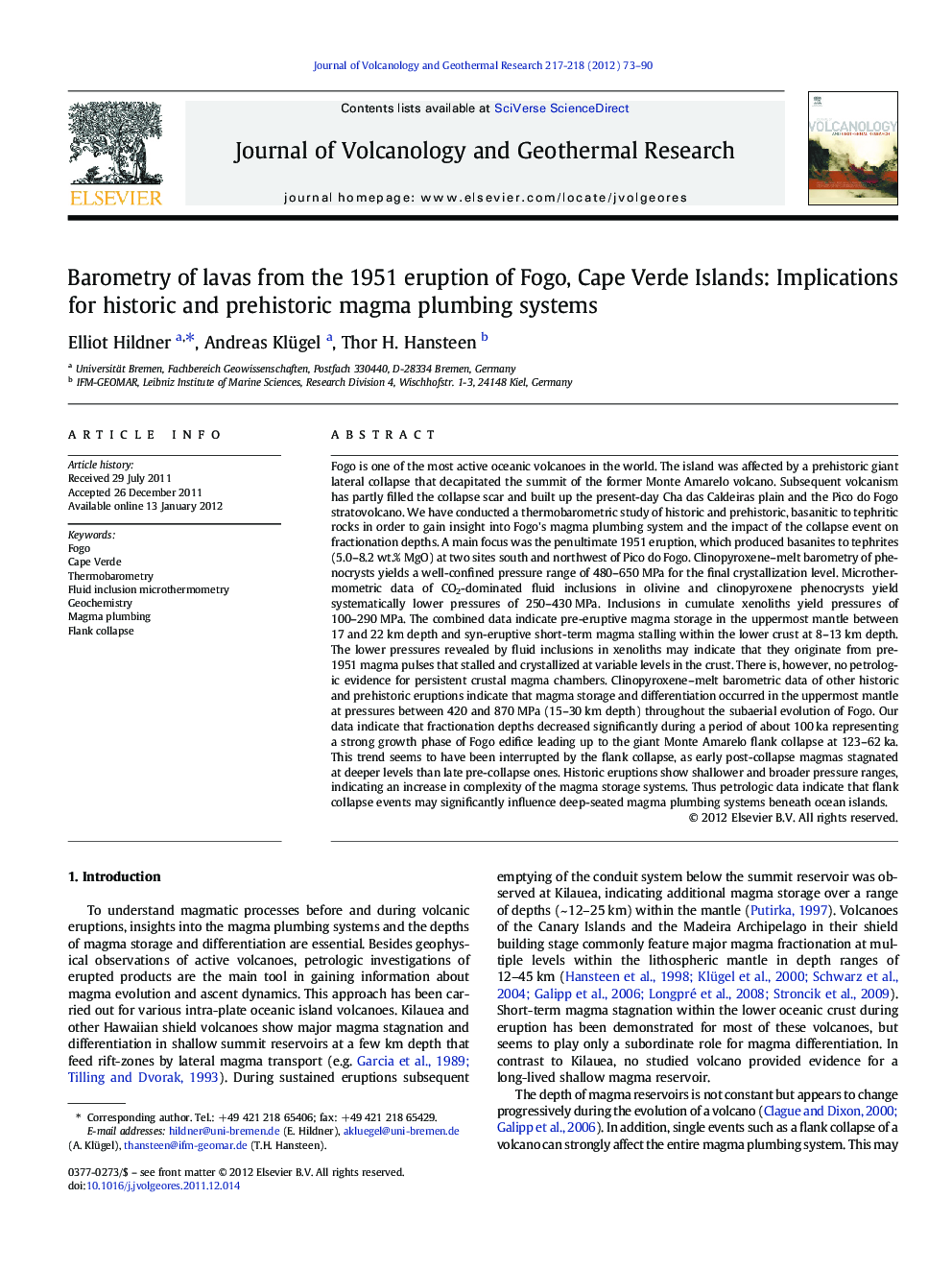| کد مقاله | کد نشریه | سال انتشار | مقاله انگلیسی | نسخه تمام متن |
|---|---|---|---|---|
| 4714977 | 1638388 | 2012 | 18 صفحه PDF | دانلود رایگان |

Fogo is one of the most active oceanic volcanoes in the world. The island was affected by a prehistoric giant lateral collapse that decapitated the summit of the former Monte Amarelo volcano. Subsequent volcanism has partly filled the collapse scar and built up the present-day Cha das Caldeiras plain and the Pico do Fogo stratovolcano. We have conducted a thermobarometric study of historic and prehistoric, basanitic to tephritic rocks in order to gain insight into Fogo's magma plumbing system and the impact of the collapse event on fractionation depths. A main focus was the penultimate 1951 eruption, which produced basanites to tephrites (5.0–8.2 wt.% MgO) at two sites south and northwest of Pico do Fogo. Clinopyroxene–melt barometry of phenocrysts yields a well-confined pressure range of 480–650 MPa for the final crystallization level. Microthermometric data of CO2-dominated fluid inclusions in olivine and clinopyroxene phenocrysts yield systematically lower pressures of 250–430 MPa. Inclusions in cumulate xenoliths yield pressures of 100–290 MPa. The combined data indicate pre-eruptive magma storage in the uppermost mantle between 17 and 22 km depth and syn-eruptive short-term magma stalling within the lower crust at 8–13 km depth. The lower pressures revealed by fluid inclusions in xenoliths may indicate that they originate from pre-1951 magma pulses that stalled and crystallized at variable levels in the crust. There is, however, no petrologic evidence for persistent crustal magma chambers. Clinopyroxene–melt barometric data of other historic and prehistoric eruptions indicate that magma storage and differentiation occurred in the uppermost mantle at pressures between 420 and 870 MPa (15–30 km depth) throughout the subaerial evolution of Fogo. Our data indicate that fractionation depths decreased significantly during a period of about 100 ka representing a strong growth phase of Fogo edifice leading up to the giant Monte Amarelo flank collapse at 123–62 ka. This trend seems to have been interrupted by the flank collapse, as early post-collapse magmas stagnated at deeper levels than late pre-collapse ones. Historic eruptions show shallower and broader pressure ranges, indicating an increase in complexity of the magma storage systems. Thus petrologic data indicate that flank collapse events may significantly influence deep-seated magma plumbing systems beneath ocean islands.
► We explore magma stagnation and differentiation depths at Fogo, Cape Verde Islands.
► The 1951 magma differentiated in the upper mantle in 17–22 km depth.
► Short-term stagnation of the 1951 magma in 9–13 km depth during eruption.
► Magma stagnation in 15–30 km depth for all observed historic and prehistoric eruptions.
► Trend to shallower stagnation levels was temporarily interrupted by a giant lateral collapse.
Journal: Journal of Volcanology and Geothermal Research - Volumes 217–218, 1 March 2012, Pages 73–90